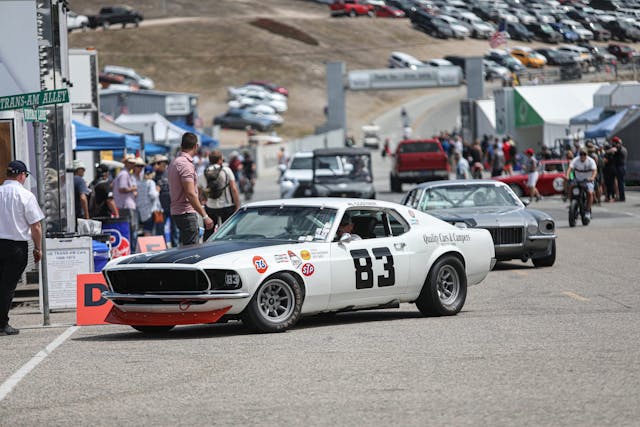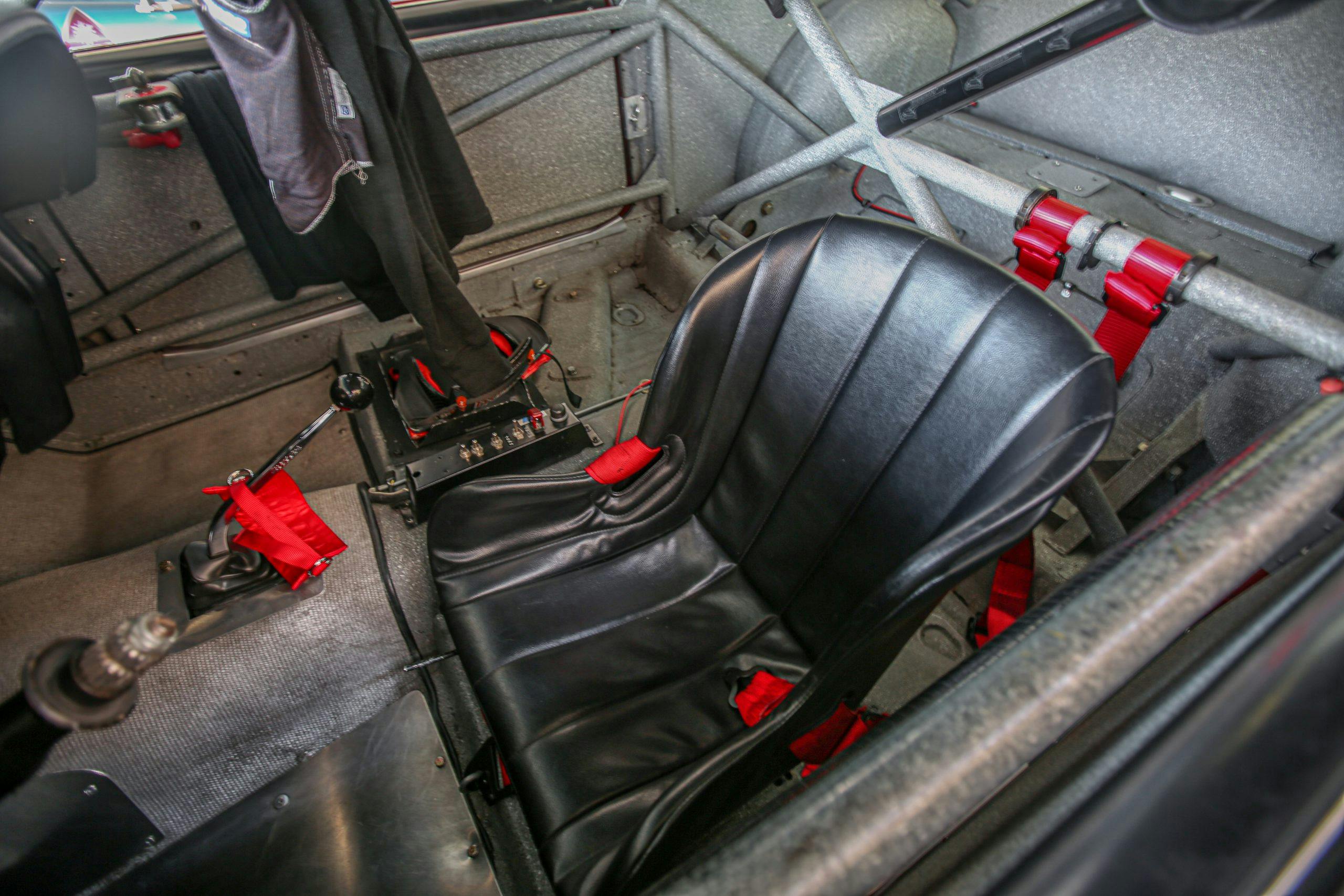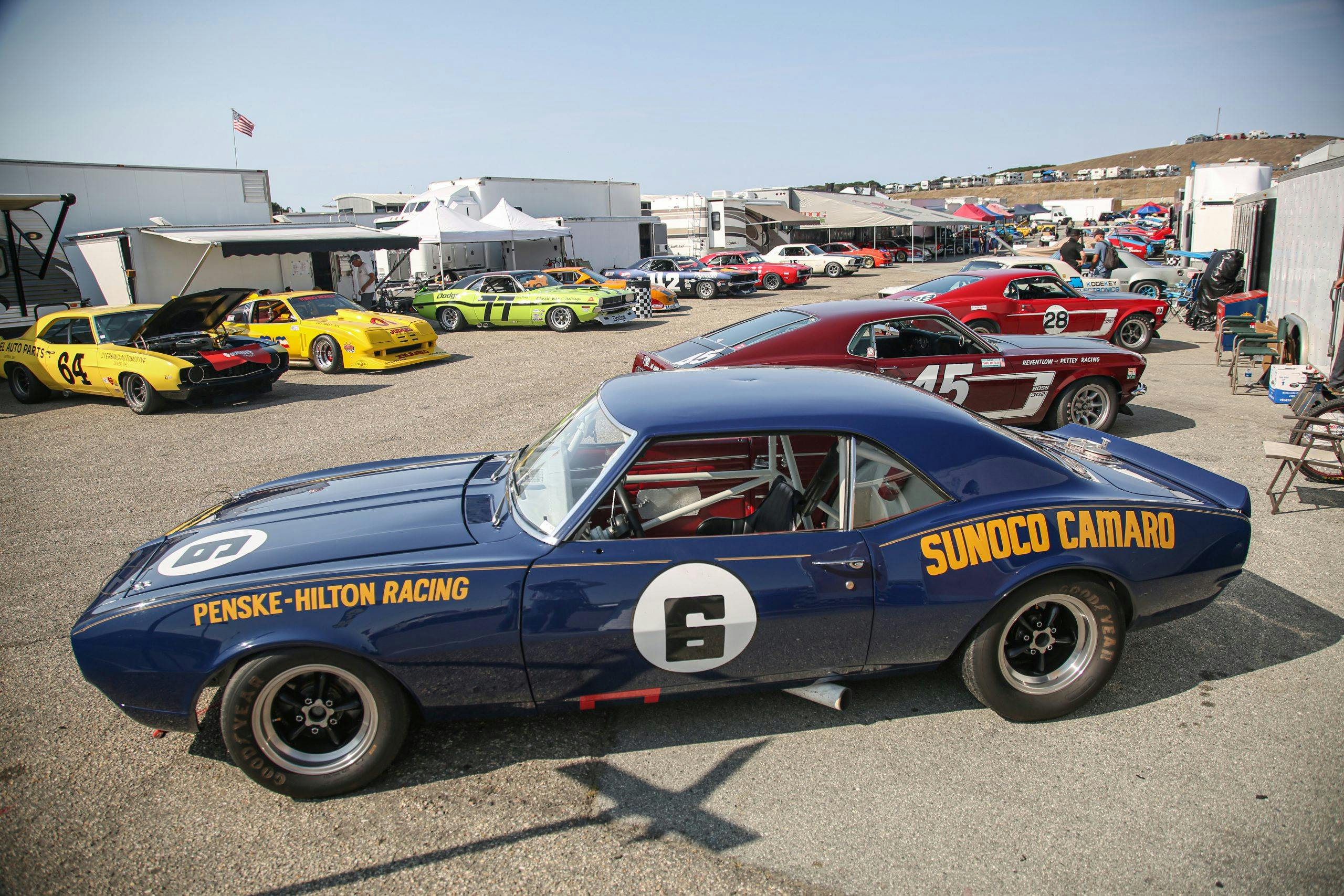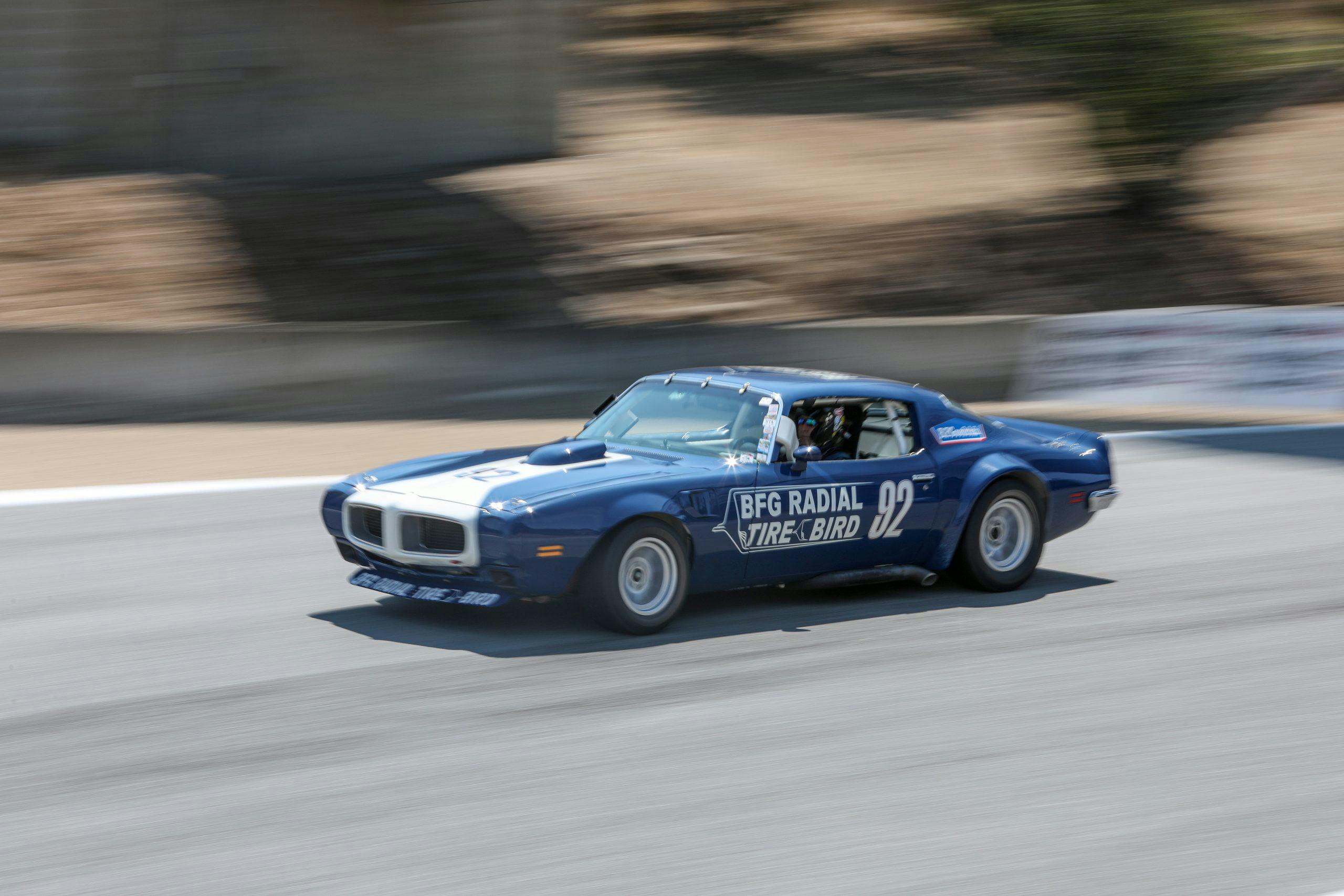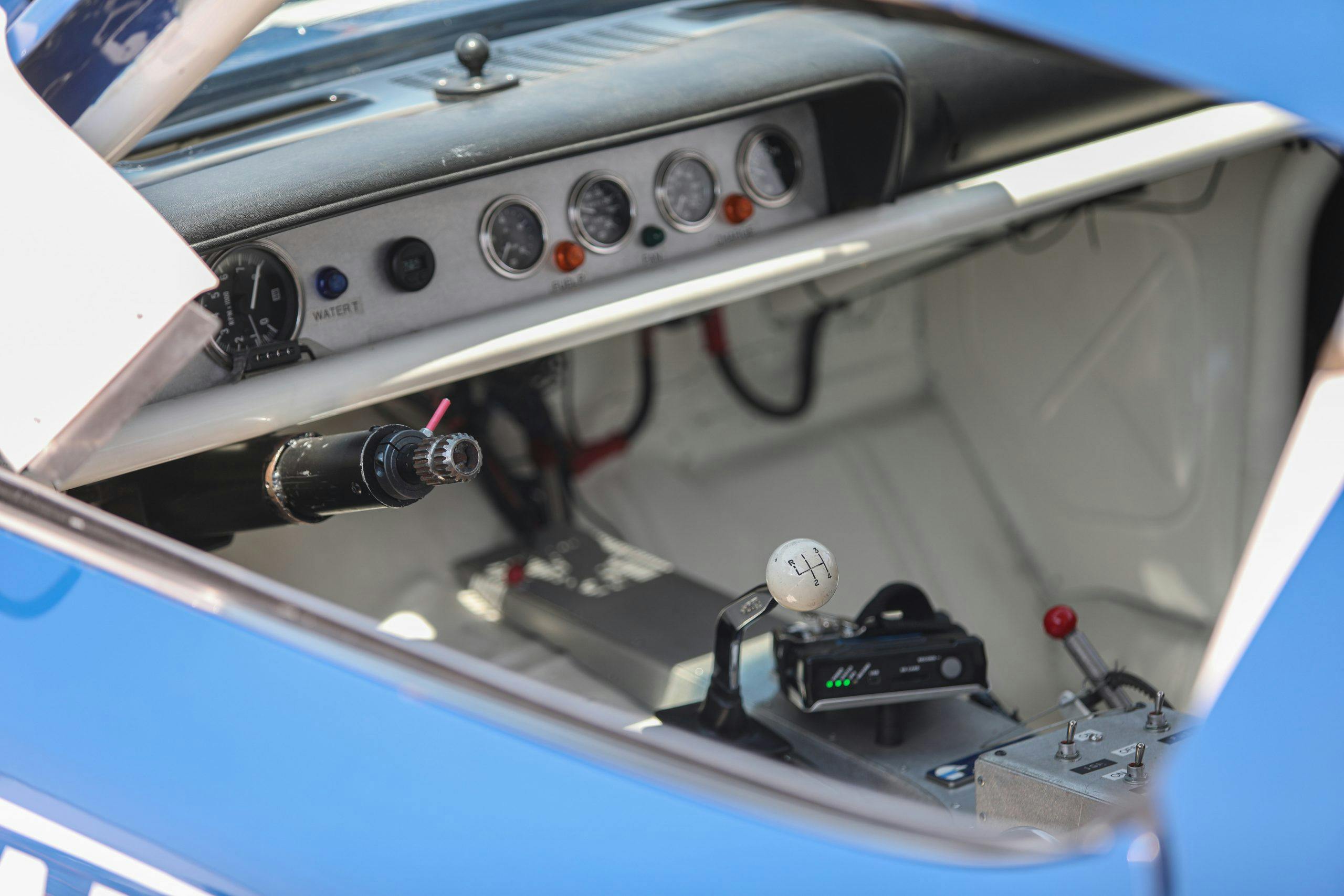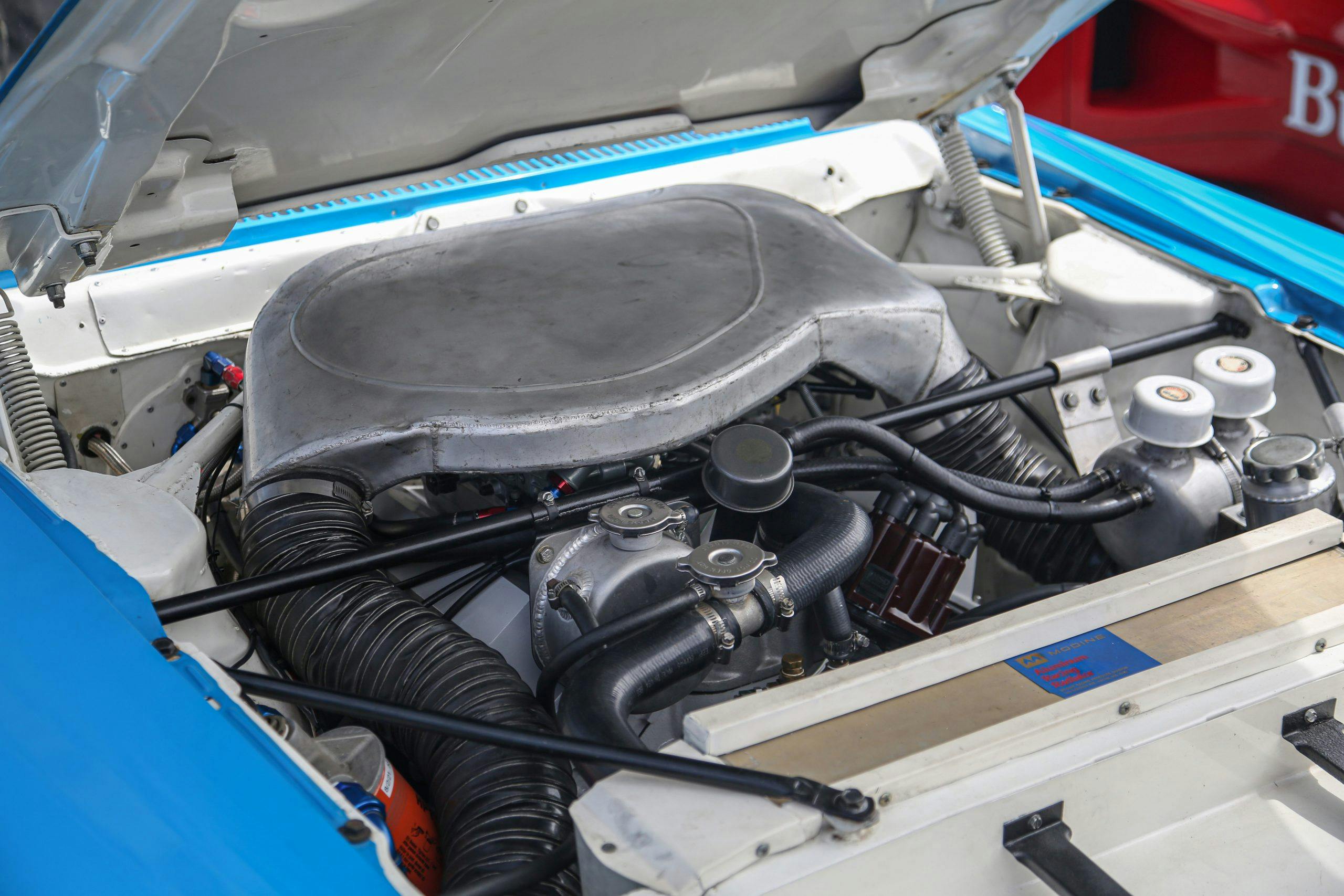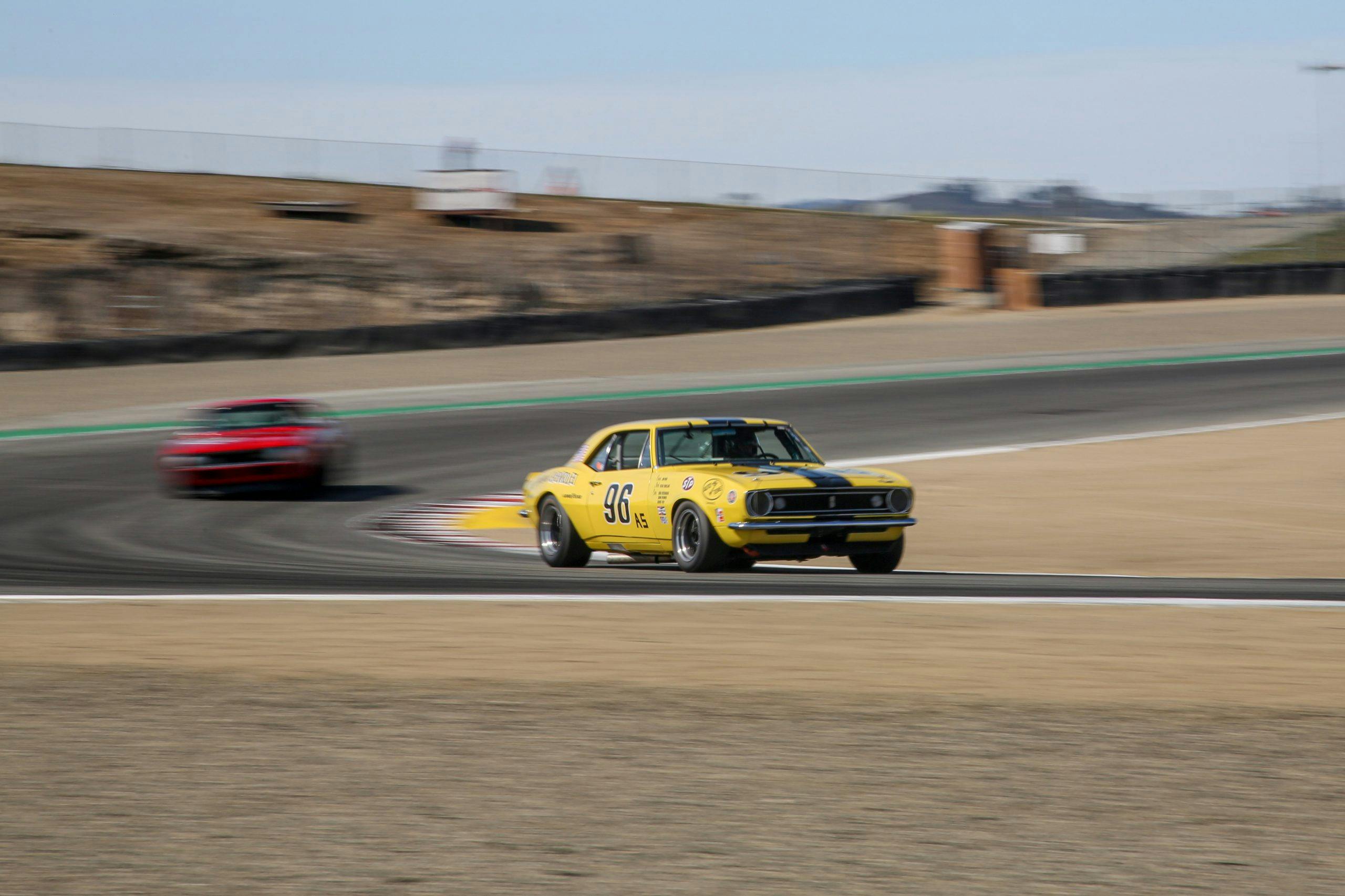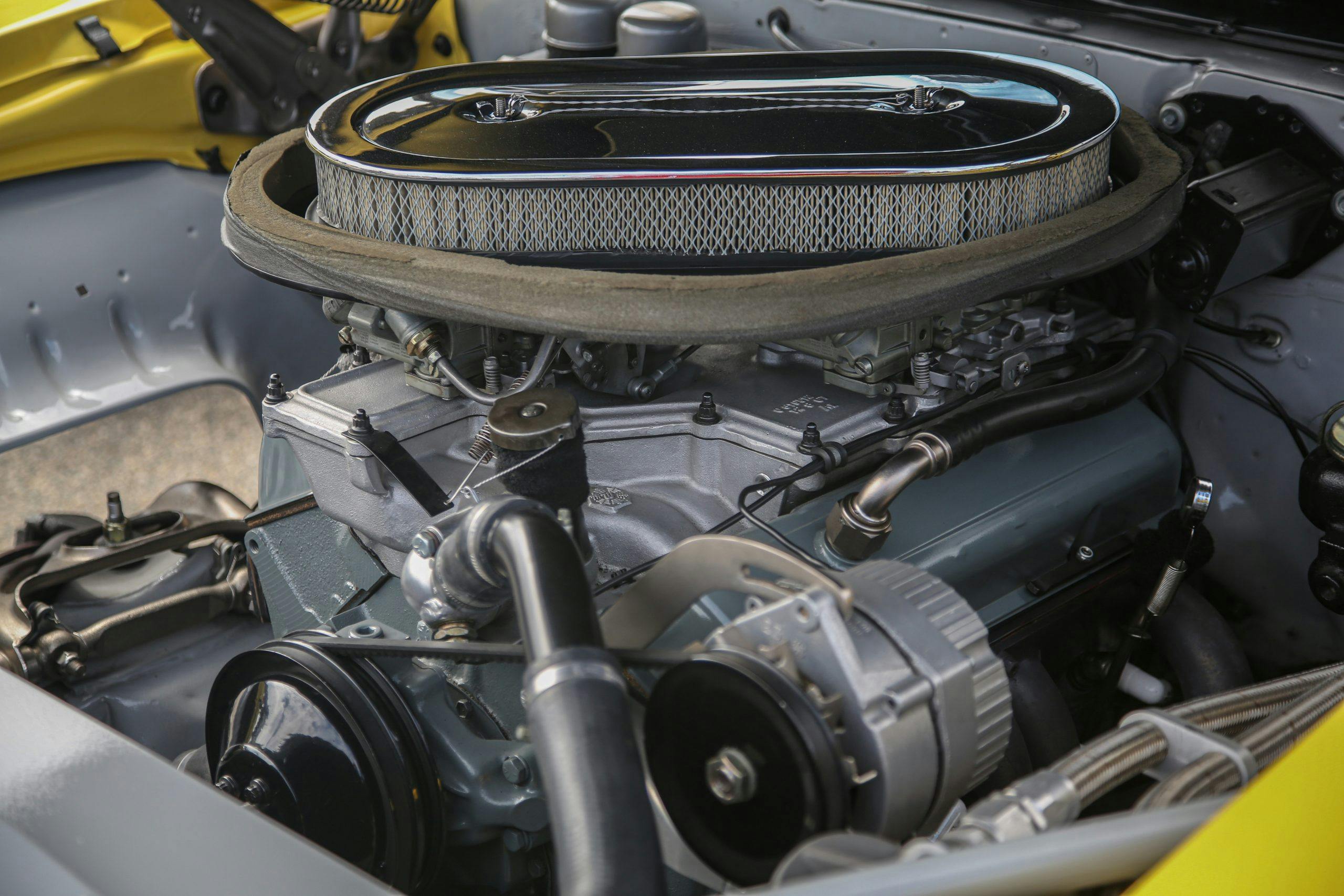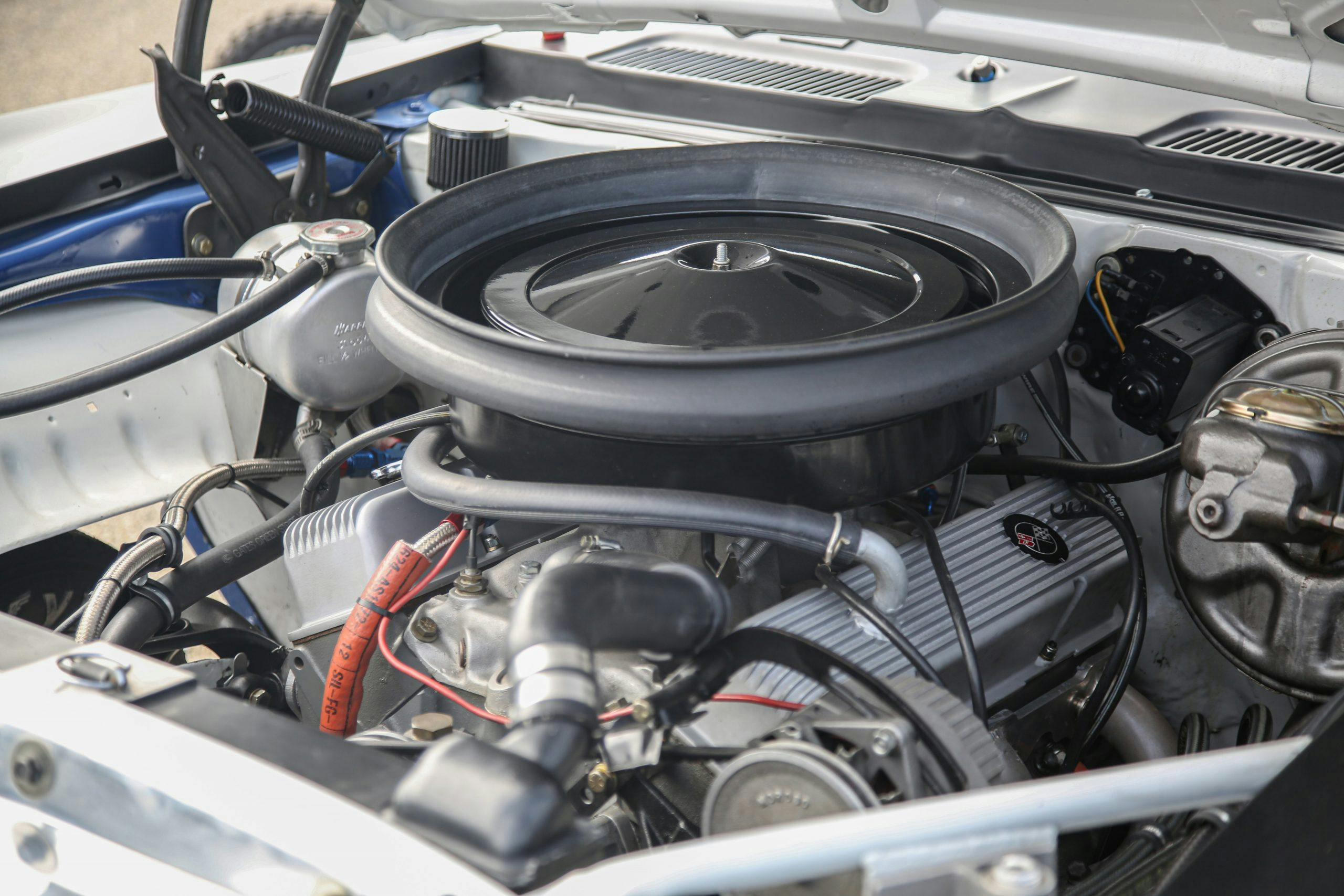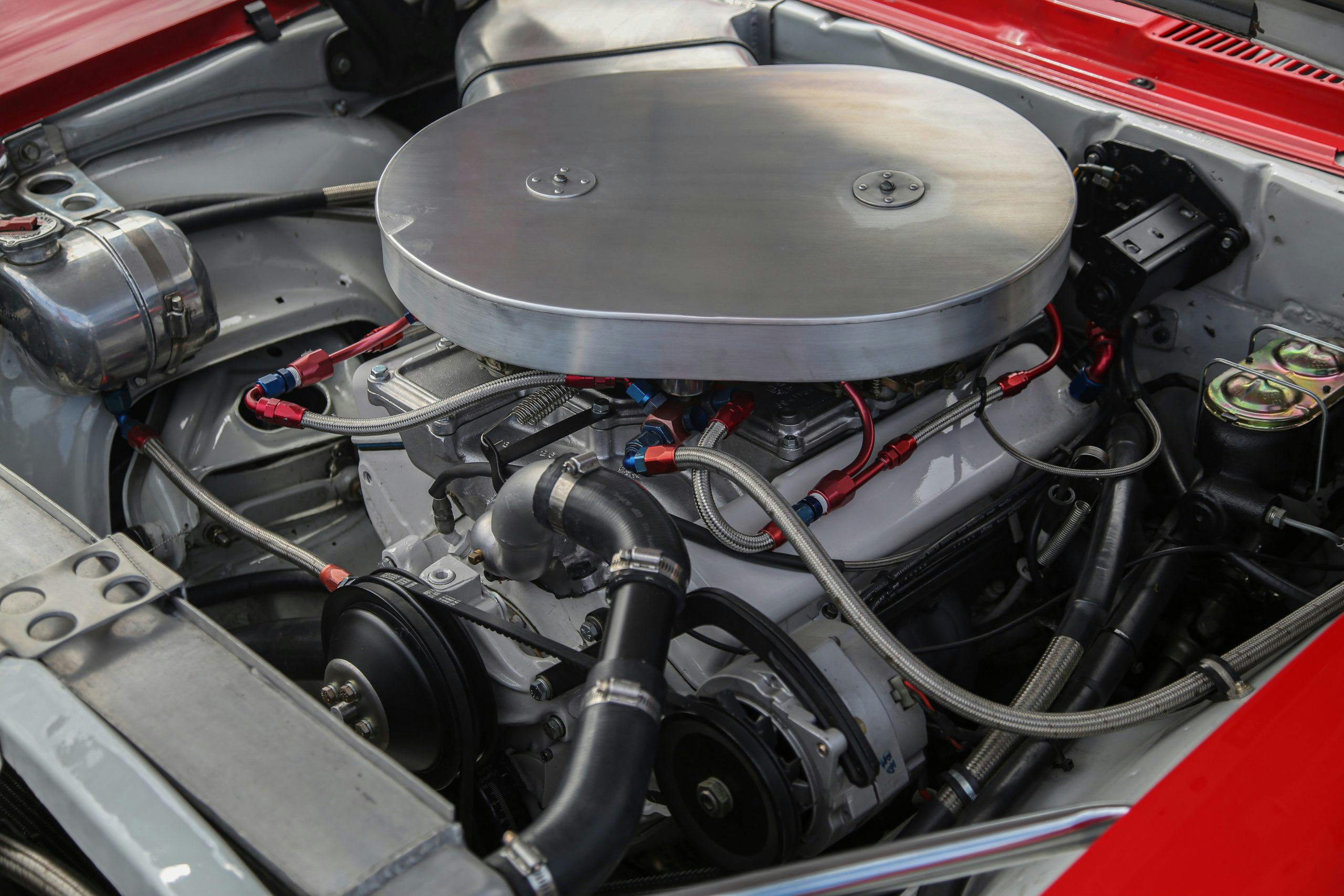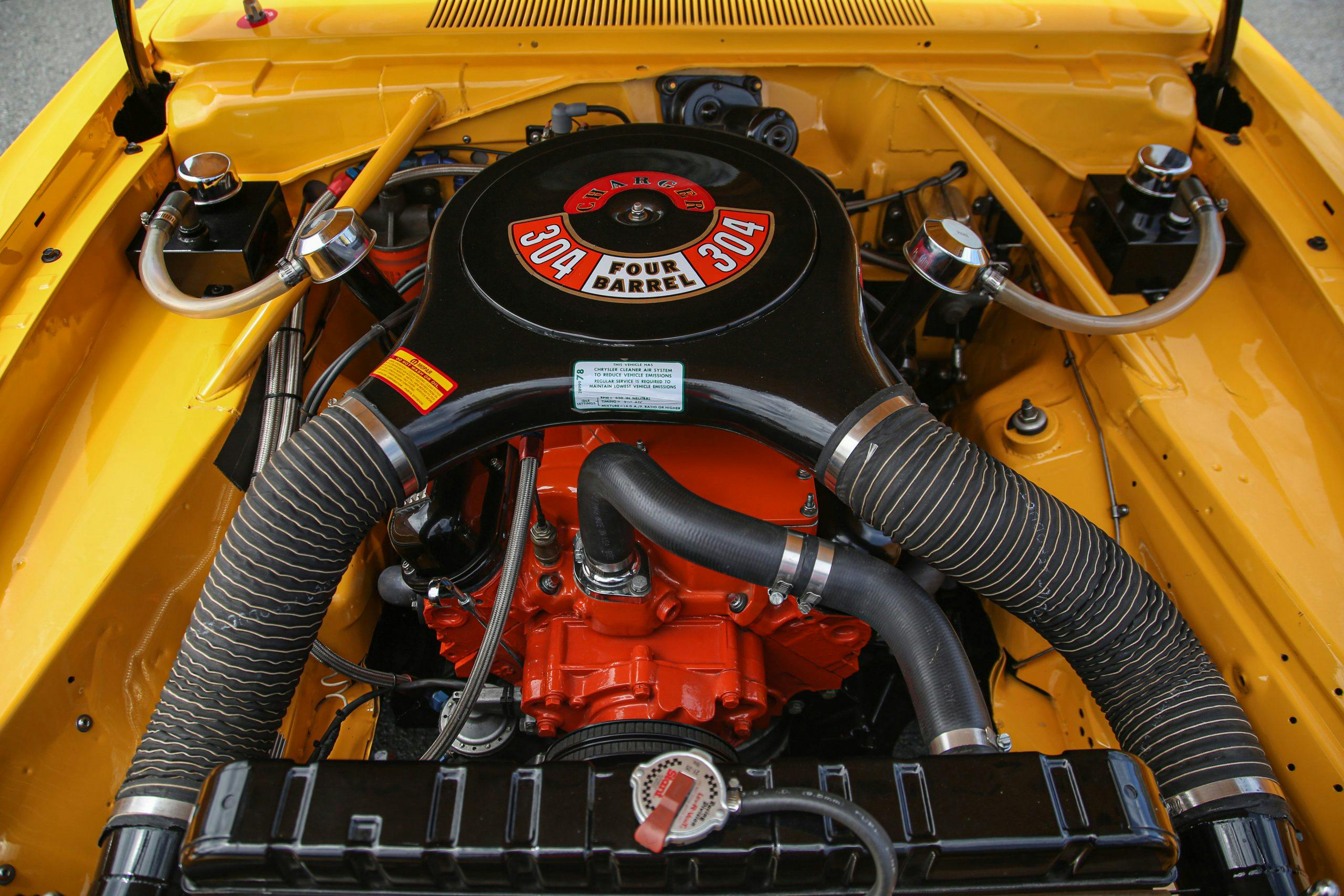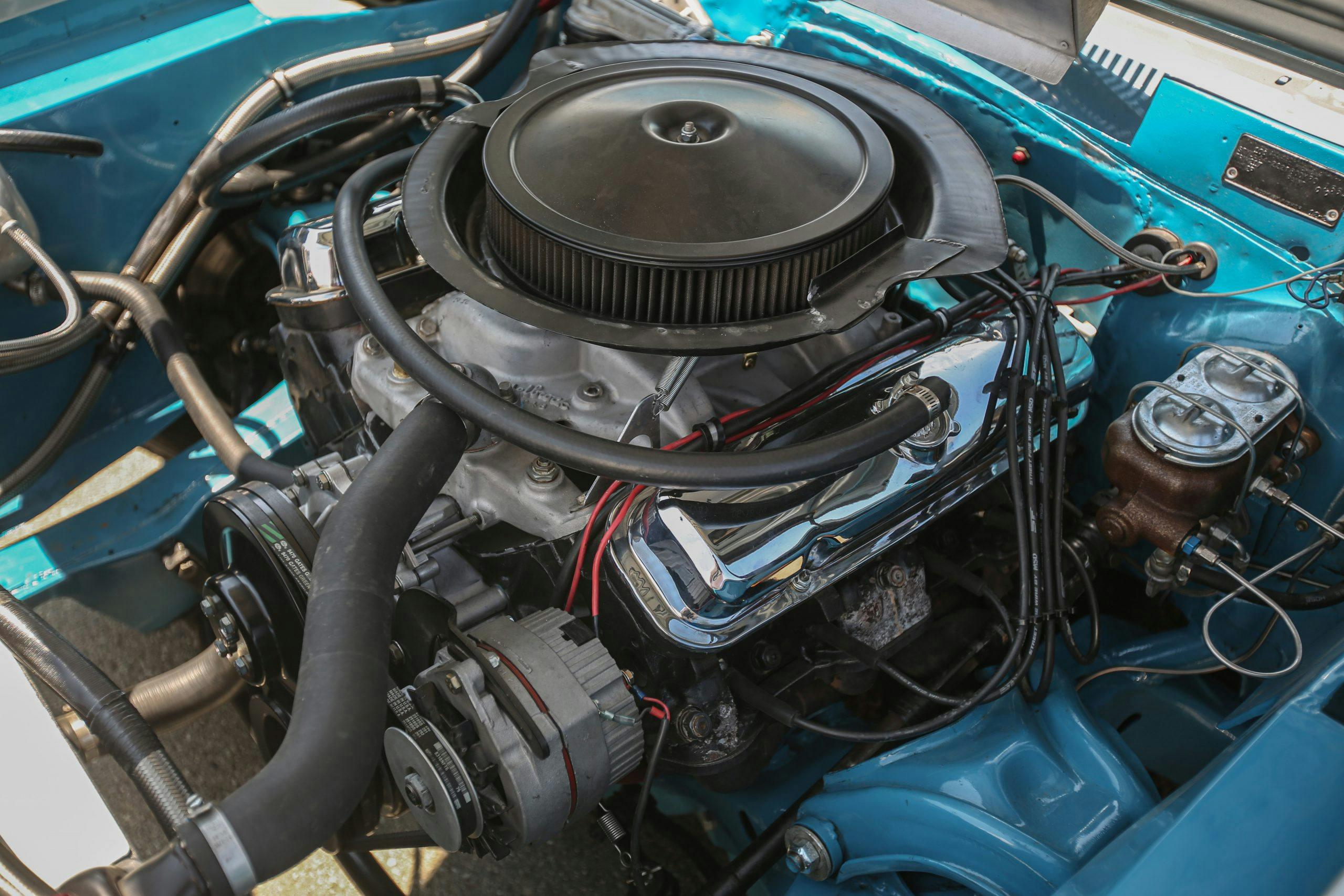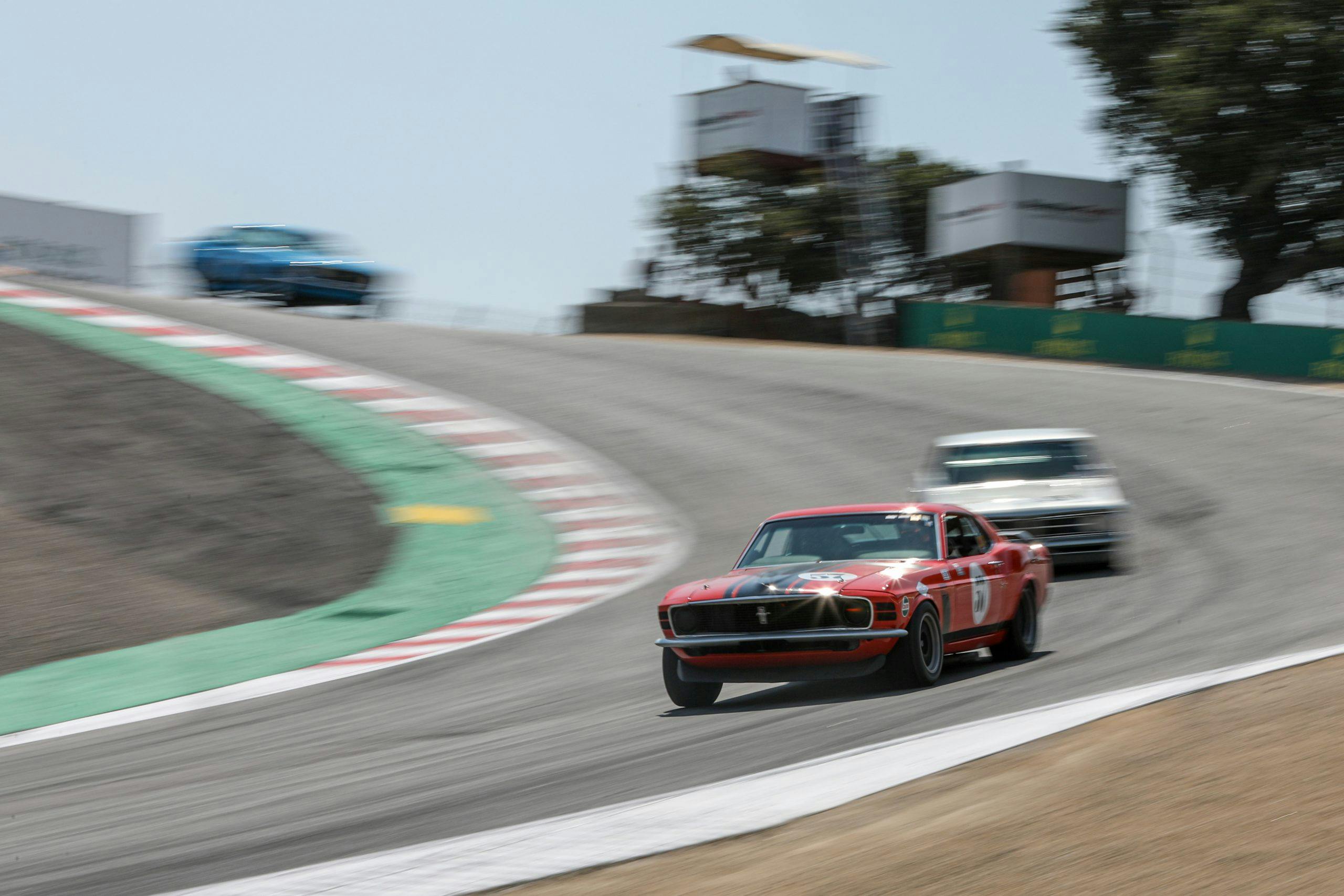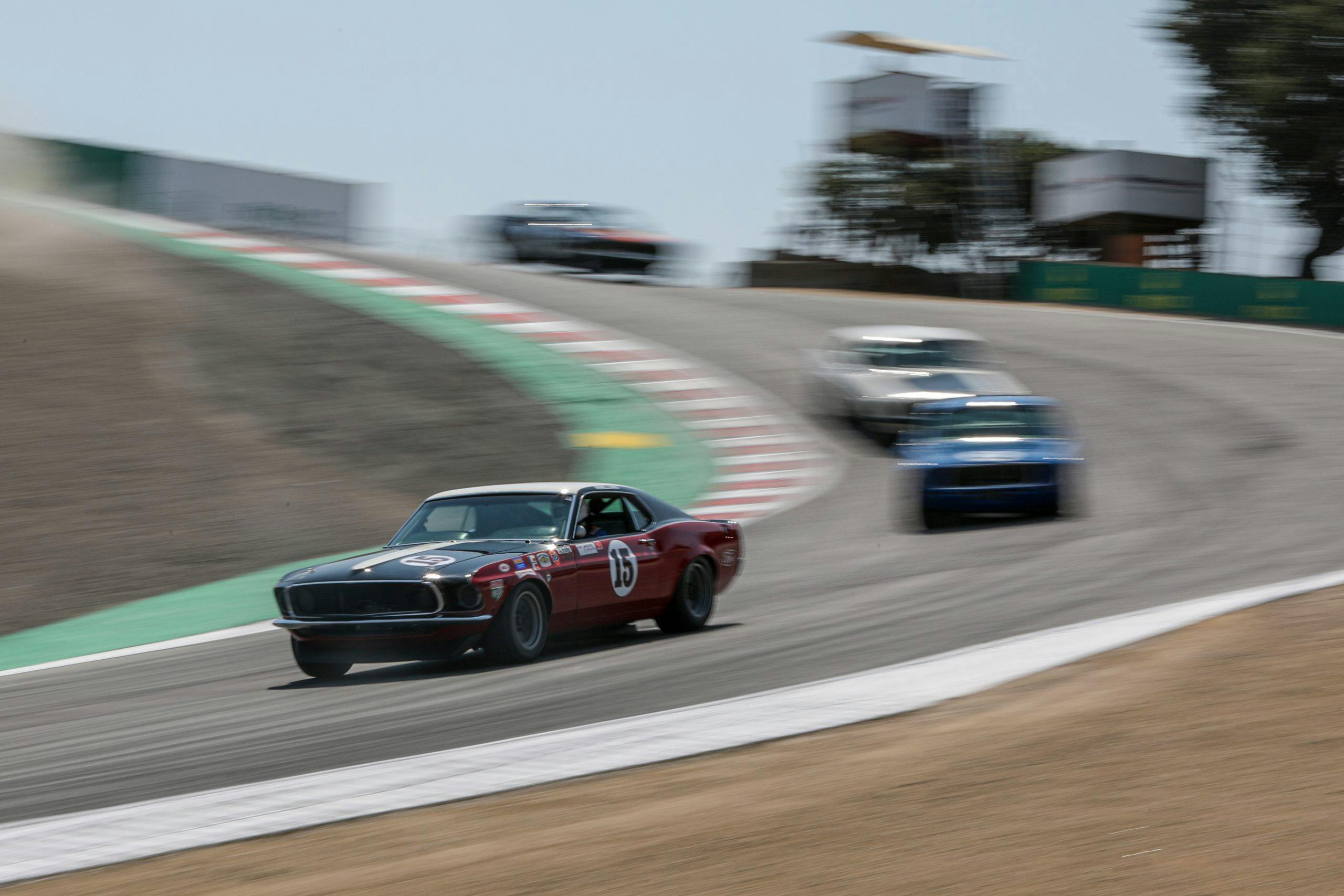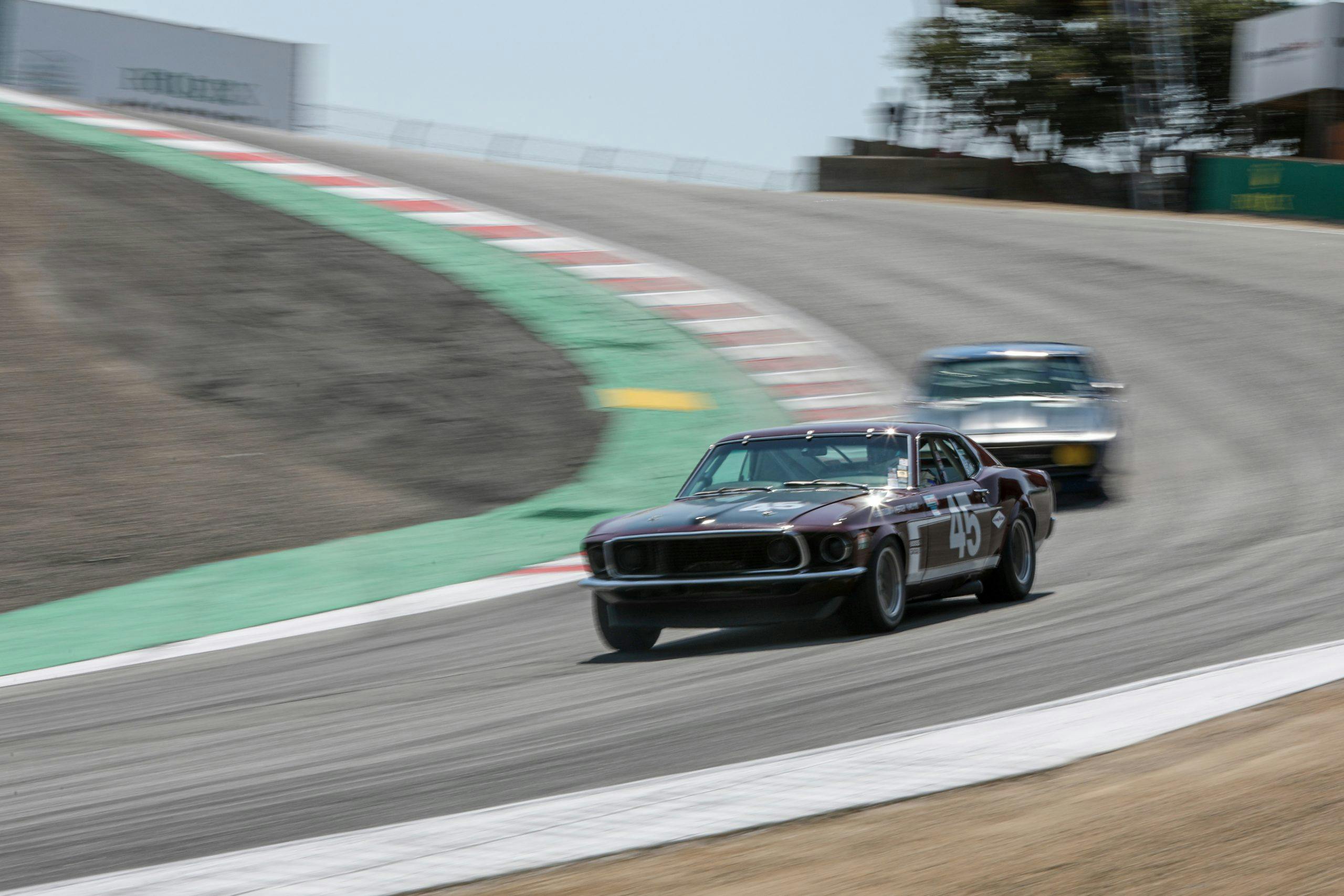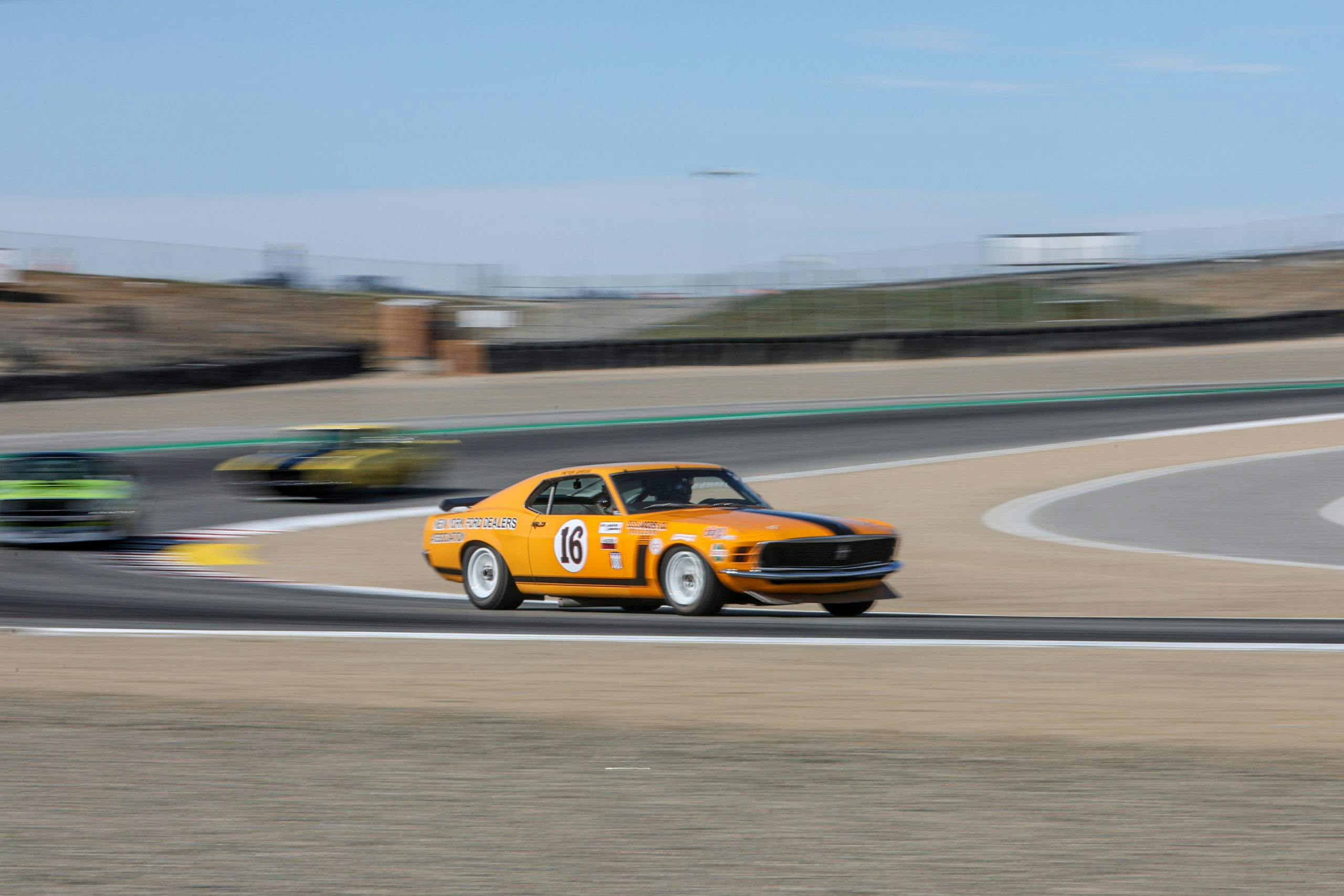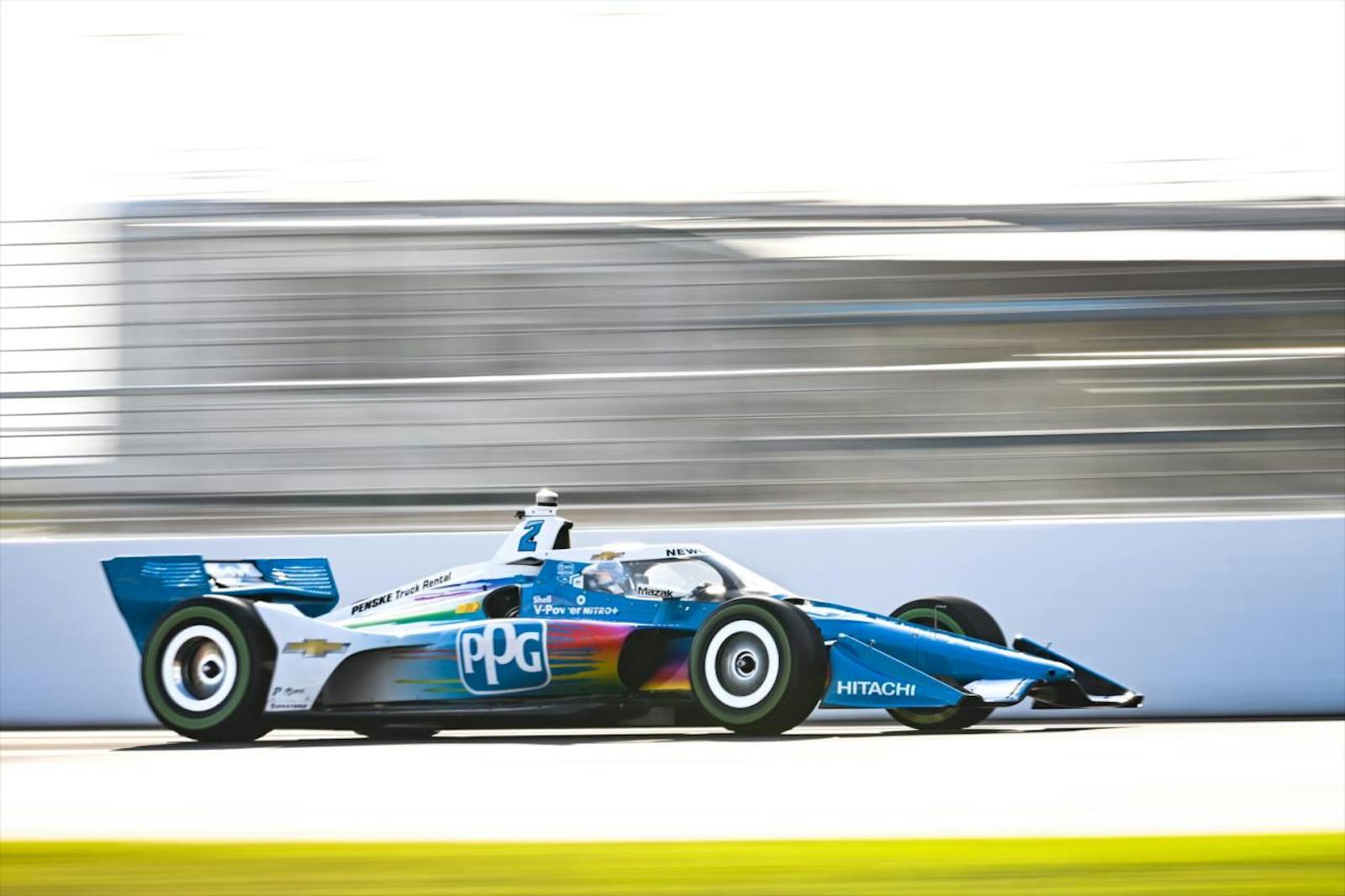What’s it like to wring a period-correct Trans Am Boss 302 around Laguna Seca?
We at Hagerty love a good concours, and there’s no doubt that Pebble Beach is a world-class affair. But after we’ve woken up with Dawn Patrol and admired the stately procession of polished lacquer and chrome across the manicured fairway, you best believe we’re hightailing it to WeatherTech Raceway Laguna Seca to see a field of angry, high-strung V-8s clawing for position on the famed Corkscrew or Andretti Hairpin.
The 1966–72 Trans Am class at the Rolex Monterey Motorsports Reunion is among the most competitive fields you’ll see take to the track during Monterey Car Week. Other classes have more disparity, which spreads out the field, but the Trans Am cars often run in packs, with several lead changes over the course of the 20-minute qualifying sessions. Occasionally the racers will become so caught up in keeping competitors at bay they’ll push too hard and wind up in one of the many gravel pits at Laguna Seca.
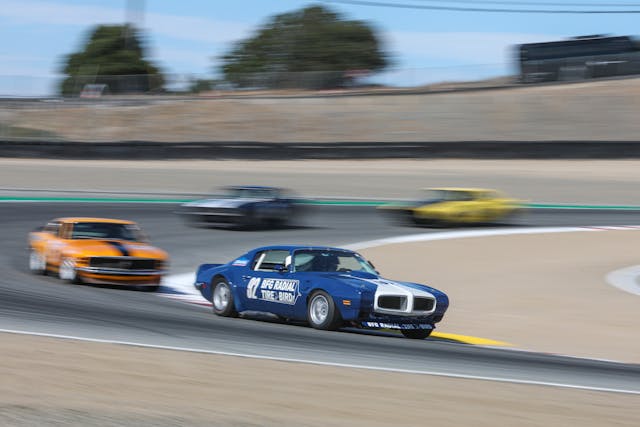
I spoke with Drew Alcazar, the exuberant frontman of auction house Russo & Steele, who is also a 12-year veteran of vintage Trans Am racing, about what it’s like to race among a closely matched field. He campaigns a 1969 Mustang that has a racing pedigree, as do the rest of the cars in the class.

“I would have liked to have started 40 years ago,” Alcazar says. A longtime fan of the race series, Alcazar said there was so much to love about the class of V-8 racers—from the Minilite wheels to the striking colors—that the pony car racers pulled him in. “I kind of jumped into the deep end of the pool right out of the gate. I’d never been in a race car before.”
Alcazar realized he needed to get some solid training under his belt if he was ever going to move up from the back of the pack. “I took a year and did every race school that I could possibly go to. It was an incredible learning experience. I certainly didn’t have an appreciation … for what it takes to drive a car around a racetrack proficiently.”
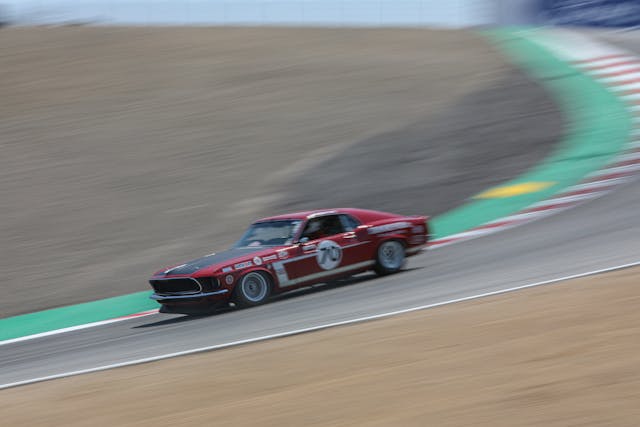
Alcazar says that it is nice to be running up with the front cars, though there’s much more to learn. Still, the racing among the tightly knit group of racers is more to Alcazar than pure competition. “You can clear your head and think of nothing but the next apex, trying to fine-tune your driving. Everything else goes away. It’s very therapeutic in that way.”
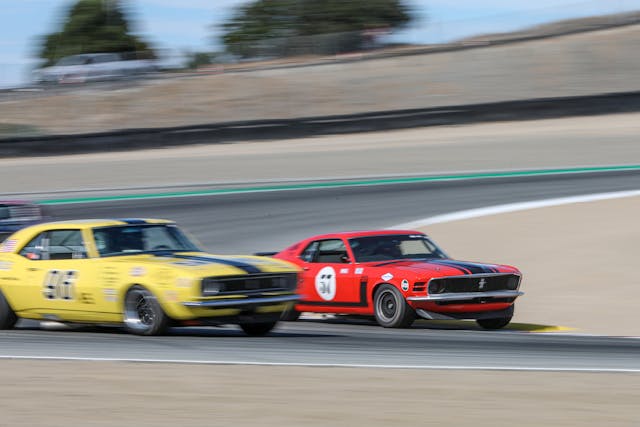
Alcazar also races two Shelbys, both GT 350s, but the same field may also contain 1963 Corvettes, Cobras, and Jaguar E-Types. “Sometimes the B-Production guys get a little enthusiastic, so you have to be more aware,” Alcazar says. In the Trans Am group, everyone is considerate about the historic iron that they’re hurtling around the track. They’re also all sticklers for authenticity.
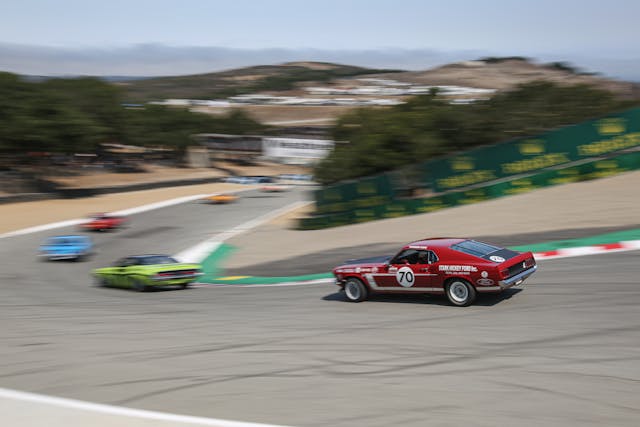
“My Shelbys are Gold Medallion cars with the SVRA, which means they’re 100 percent period-correct. The Trans Am group is even more strict in its governance and scrutineering in terms of the period-correct elements. You’re not allowed, in any way, shape, or form, to run something that wasn’t available in period, whether it be brakes, tires, suspension, or engine components. The only latitude they give you is safety equipment, so you’ll see some people with larger seats. Most of our cars are still running the same seats they were in the ’60s.”
A look inside Alcazar’s car is just as much a trip back in time as hearing the field of 5.0-liter V-8s roar by. Drew’s car was already well-known and well-maintained when he acquired it. While it was campaigned by a privateer, it also had access to some vital factory support. The rollbar, suspension, and the relief in the floor for the side-exit exhaust are identical to the factory team cars, as it was also built by the same shop, Car Craft. It still has the old-school seat.

I asked Alcazar how he and his Trans Am racing friends compare to the pros in the ’60s and ’70s in terms of lap times. “Oh god … this is very much a hobby,” Alcazar replies with a humble laugh. “I made my peace a long time ago that I am a driver in an old race car, I am not an old race car driver. I don’t know what the disparity is, I’m sure it’s considerable. The biggest difference is the time we’re on the track. We’re doing 20 to 30 minute sessions where races of the day were hours long. It’s amazing that those guys, incredible athletes, and talents, were in cars for hours and hours.”
The Rolex Monterey Motorsports Reunion continues to be one of our top events of Monterey Car Week, and is one of the most spectator-friendly races you’ll ever attend. If pony cars aren’t your thing, remember that there are more than a dozen classes that buzz though the historic, hilly racetrack, and we’ll bring you more of those other classes as well.
